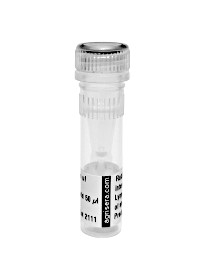1

Anti-ClpB1| Chaperone protein ClpB1 (cyanobacterial)
AS16 4039 | Clonality: Polyclonal | Host: Rabbit | Reactivity: Synechococcus sp. sp. strain PCC 7942
- Product Info
-
Immunogen: C-terminal 163 amino acid sequence of the Synechococcus sp. strain PCC 7942 ClpB1 protein, fused to the MBP (maltose binding protein). UniProt: P53533
Host: Rabbit Clonality: Polyclonal Purity: Serum Format: Lyophilized Quantity: 50 µl Reconstitution: For reconstitution add 50 µl of sterile water Storage: Store lyophilized/reconstituted at -20°C; once reconstituted make aliquots to avoid repeated freeze-thaw cycles. Please remember to spin the tubes briefly prior to opening them to avoid any losses that might occur from material adhering to the cap or sides of the tube. Tested applications: Western blot (WB) Recommended dilution: 1 : 1000 (WB) Expected | apparent MW: 79 | 93 kDa
- Reactivity
-
Confirmed reactivity: Synechococcus sp. strain PCC 7942 Predicted reactivity: Cyanobacteria
Species of your interest not listed? Contact usNot reactive in: No confirmed exceptions from predicted reactivity are currently known - Additional Information
-
Additional information (application): For western blot detection image refer to the article below - Background
-
Background: ClpB1 Chaperone protein ClpB1 is involved in acquired thermotolerance in cyanobacteria and belongs to molecular chaperones. Contributes to cold acclimation process in cyanobacteria. - Product Citations
-
Selected references: Porankiewicz and Clarke (1997). Induction of the heat shock protein ClpB affects cold acclimation in the cyanobacterium Synechococcus sp. strain PCC 7942. J Bacteriol. 1997 Aug;179(16):5111-7.
- Protocols
- Reviews:
-
This product doesn't have any reviews.
Accessories

AS03 037 | Clonality: Polyclonal | Host: Rabbit | Reactivity: global antibody and compartment marker for higher plants, lichens, algae, cyanobacteria, dinoflagellates, diatoms
Benefits of using this antibody


